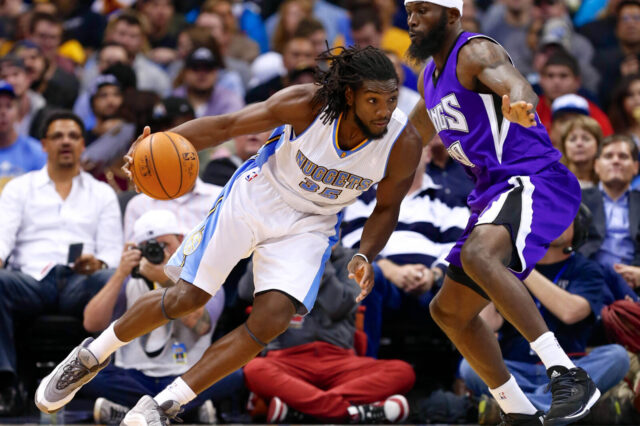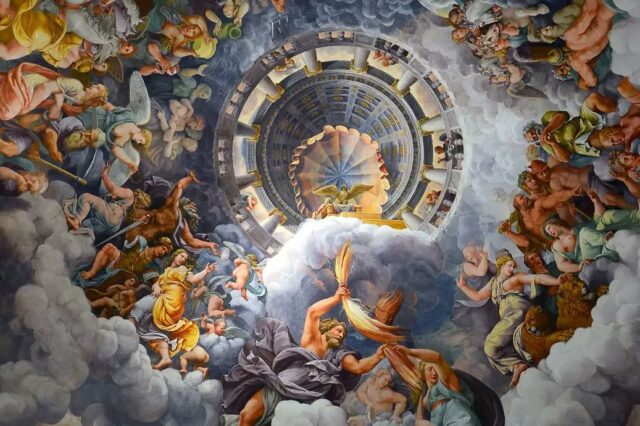McNichols Sports Arena was built in 1975 and was the signal that Denver was ready to jump into the basketball big leagues. What followed was nearly 25 seasons of highs and lows, and a family atmosphere that's hard to capture in modern day arenas.
****
The Denver Auditorium Arena was quaint, and small. When built in 1908 it was the second largest indoor arena in America next to Madison Square Garden but a renovation in the 1950’s reduced the capacity from 12,000 to a mere 6,000. In December, 1968 Led Zeppelin played their first ever concert in America there. My mom was there to see them, although she was there to see a band called Spirit (Zeppelin was featured on a triple bill that included Spirit and Vanilla Fudge). There was alot of character to that place.
The Auditorium Arena was also home to the ABA’s Denver Rockets from their inception in 1967. The ABA was the fledgeling, loose, funky fun sister to the NBA. While this wasn’t the city’s first experience with basketball (The old Denver Nuggets played basketball for one season in 1949-50 in the brand new National Basketball Association) this was the first real “fun” basketball experience the city had. From it’s beginnings in 1967 the Nuggets featured such players as Spencer Haywood, Byron Beck, Mack Calvin and a little guard by the name of Larry Brown. The Nuggets grew in popularity as they became one of the most fun and entertaining teams of the ABA.
With that increased popularity came an invitation to merge with the NBA in 1974 … a merger which was completed in 1976. With that invitation it was clear that the Nuggets needed a new and larger arena. In comes an arena named after a sitting Denver mayor, built next to Mile High Stadium on what was formerly Denver’s garbage dump at the nexus of Colfax, Federal and I-25.
****
McNichols Sports Arena was built in 1975, and immediately became one of the largest arenas in the ABA. As with other arenas of the 1970’s it was a bit nondescript and very utilitarian. The Rockets also changed their name to the Nuggets in honor of that long-forgotten NBA team from 1950. The seating capacity was just over 17,000 and McNichols and the Nuggets easily lead the ABA in attendance their final season. What helped was the addition of David Thompson, whom the Nuggets paid an ungodly amount of salary (for the times) in order to lure him from the NBA. Also, the Nuggets acquired Forward/Center Dan Issel from the Kentucky Colonels (in a weird deal that fell into the place because the initial team he was traded to, the Baltimore Claws, went defunct shortly after the trade).
A stocked team that featured Thompson, Issel, and super center/forward Bobby Jones tore up the ABA on their way to 60 wins and a birth in the ABA Finals vs Julius Irving and the New York Nets. Denver crowds gained the reputations for being loud and rowdy … much like the crowds who filed into the still-expanding Mile High Stadium. The Nuggets were ready do enter the NBA with a one year old arena and a raucus, rowdy fanbase. The Denver Nuggets were the first professional team in Denver to go to a Championship Series/Finals (ABA) and those first NBA teams were ready to take the league by storm.
****
Over the years crowds began to dwindle at what became lovingly known as Big Mac due (mostly) to the city of Denver’s obsession with the Broncos. While the Nuggets were consistently a good team throughout the 80’s attendance was often in the middle of the pack in the NBA. The first Nuggets game I ever remember attending was during the 1987-88 season when the Nuggets played the Los Angeles Lakers toward the end of the year. Nuggets won 120-106 and I got a blue and white mini-basketball which my mom still has somewhere in her attic. That was the first of many games I attended at Big Mac.
While the arena itself was nondescript, the atmosphere in the arena was very much like seeing family again. The players were close to the stands and the crowds appreciated the intimate attention that owners such as Red McCombs and later Sidney Shlenker showed the fans. In fact, Shlenker invested $12 million in upgrading the scoreboards in the arena before the 1987-88 season and even adding his own arena league team … the Denver Dynamite.
Once Shlenker sold the team (in a fiasco well covered here), Ascent Entertainment Group president Tim Lieweke determined the Nuggets needed a new arena and a near decade-long process of getting a new arena began. In the meantime the decade of the 1990’s subjected the fans in the Denver area to the worst basketball in the league outside of an amazing three year, feel-good, trip that featured amazing playoff games and historic upsets.
Bic Mac was loud. LOUD when it got going. No better example of this than the 1994 Nuggets/Sonics series and the following Nuggets/Utah Jazz series. Listen to the crowd as Robert Pack throws down a thunderous dunk. Watch starting at 7:15 of the video:
However, it was even louder in game six of the following Jazz series as the Nuggets stormed back from 0-3 down to tie the series. Unfortunately, outside of game seven there’s no record of that series in video form. Which makes it one of the great “lost” series in NBA playoff history. With that being said … lets watch the moment where Reggie Williams hits a three and brings down the house in that same Seattle game: At 8:14
As bad as the Nuggets were in the 1990’s I have nothing but good memories of Big Mac. It also hosted the NCAA Championship Final Four in 1990. I saw Yes there in 1991 during their “Union” tour. Countless Nuggets game. Such warmth, such atmosphere.
While I like Pepsi Center, there was just something special about McNichols. While pretty much a characterless edifice of the tacky 1970’s it became so much more. Much more. Sometimes things develop a character from the people who inhabit it. There are those in the media who claim Denver isn’t a basketball town. While there is some truth to that, the fans that the Nuggets do have are extremely loyal and dedicated. You just need another spark.
Maybe Emmanuel Mudiay, Danilo Gallinari and Wilson Chandler can be that spark?


